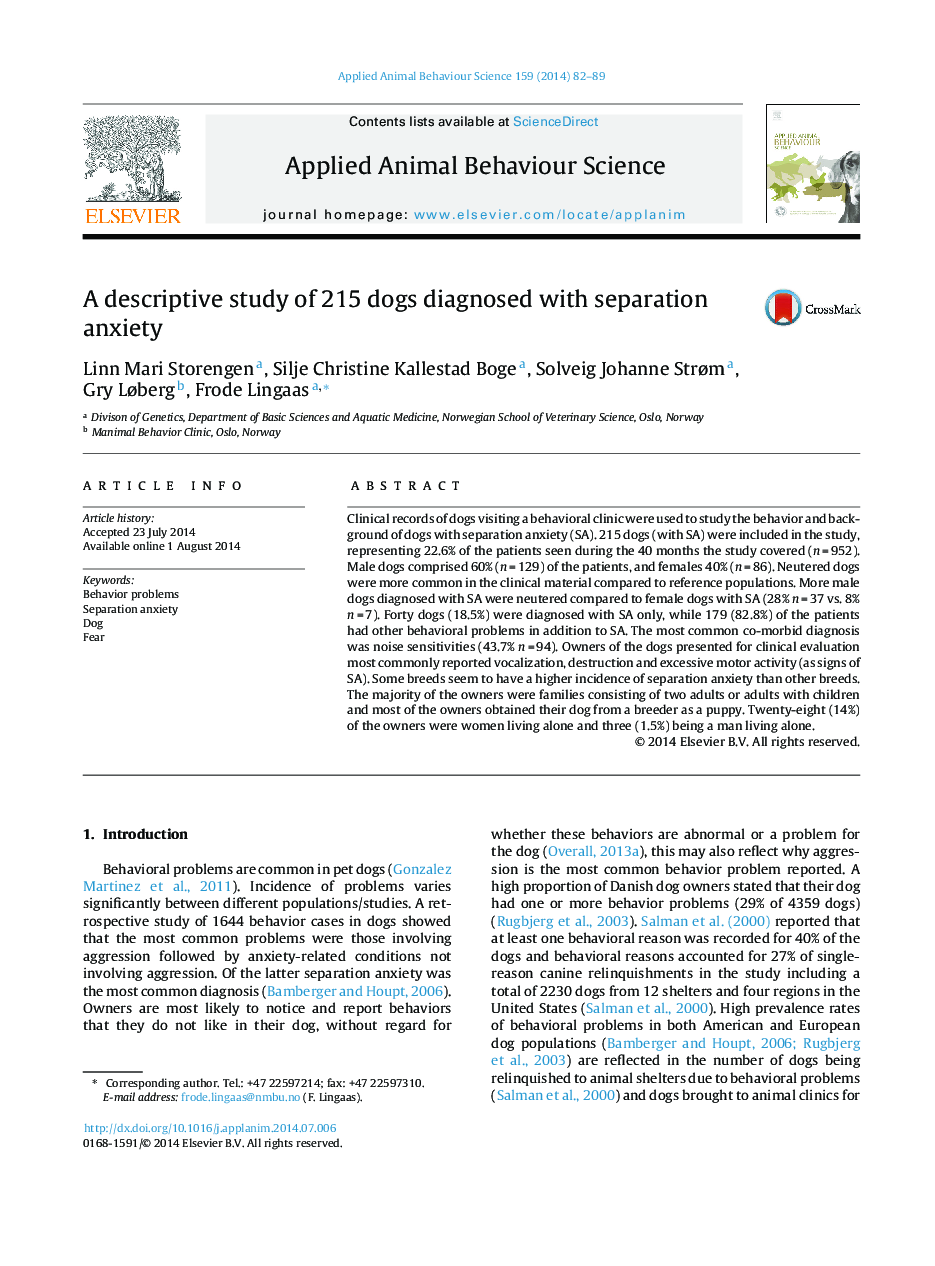| Article ID | Journal | Published Year | Pages | File Type |
|---|---|---|---|---|
| 6379652 | Applied Animal Behaviour Science | 2014 | 8 Pages |
Abstract
Clinical records of dogs visiting a behavioral clinic were used to study the behavior and background of dogs with separation anxiety (SA). 215 dogs (with SA) were included in the study, representing 22.6% of the patients seen during the 40 months the study covered (n = 952). Male dogs comprised 60% (n = 129) of the patients, and females 40% (n = 86). Neutered dogs were more common in the clinical material compared to reference populations. More male dogs diagnosed with SA were neutered compared to female dogs with SA (28% n = 37 vs. 8% n = 7). Forty dogs (18.5%) were diagnosed with SA only, while 179 (82.8%) of the patients had other behavioral problems in addition to SA. The most common co-morbid diagnosis was noise sensitivities (43.7% n = 94). Owners of the dogs presented for clinical evaluation most commonly reported vocalization, destruction and excessive motor activity (as signs of SA). Some breeds seem to have a higher incidence of separation anxiety than other breeds. The majority of the owners were families consisting of two adults or adults with children and most of the owners obtained their dog from a breeder as a puppy. Twenty-eight (14%) of the owners were women living alone and three (1.5%) being a man living alone.
Related Topics
Life Sciences
Agricultural and Biological Sciences
Animal Science and Zoology
Authors
Linn Mari Storengen, Silje Christine Kallestad Boge, Solveig Johanne Strøm, Gry Løberg, Frode Lingaas,
